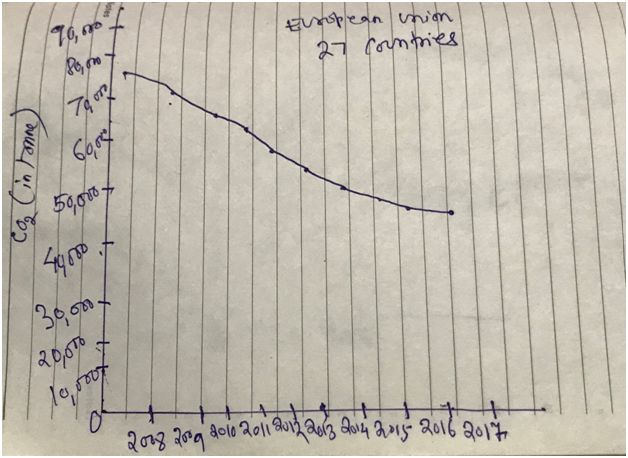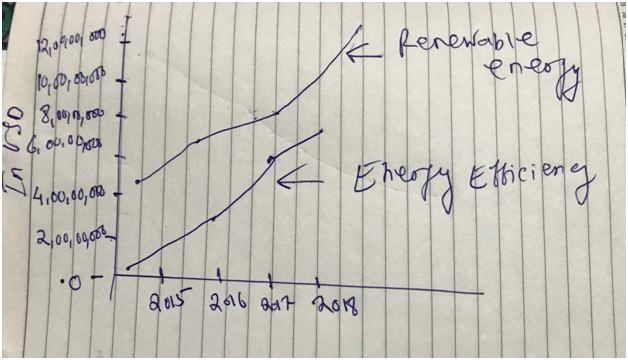Economics Assignment:A Critical analysis of Policies to Reduce Carbon Dioxide Emission
Question
Task: Policies to reduce CO2 and other greenhouse gasses (GHGs) emissions are at the centre of the political debate. In 2012 the Australian government imposed a carbon tax aimed at reducing emissions of CO2 from the power sector and other sectors of the economy. Other developed countries have implemented cap and trade mechanisms; for example, the European Union has had this system in operation since 2005. Currently, China, one of the worlds biggest emitters of CO2, is working on the implementation of a cap and trade system.
Required documents to write the paper assignment:
Unit 20 Economics of the Environment. The Core Team (2018). The Economy. Oxford.
https://core-econ.org/the-economy/book/text/20.html ( (Links to an external site.)Only sections 20.1, 20.2, 20.5, 20.36, 20.9)
Feldstein, M. S., Halstead, T., &Mankiw, N. G. (2017, February 8). Opinion | A Conservative Case for Climate Action. The New York Times. https://www.nytimes.com/2017/02/08/opinion/a-conservative-case-for-climate-action.html (Links to an external site.)
Jotzo, F. (n.d.). Despite its imminent demise, the carbon price has cut emissions. The Conversation. Retrieved July 10, 2020, from http://theconversation.com/despite-its-imminent-demise-the-carbon-price-has-cut-emissions-29199 (Links to an external site.)
You MUST cite the required readings within the assignment. If you use additional references, they should correspond to the course material, academic journal articles, and documents from reputable international organisations (for example the WB, EU, OECD, the Australian Government website). Avoid using references from the popular press. You do not get additional marks for putting more references; you should use references that are relevant and cite them in the document. Your paper must do the following:
• Discuss the objective(s) of policies to reduce CO2 emissions.
• Use economic theory (graphs) to explain the effects of the carbon tax in reducing CO2 emissions
• Use economic theory (graphs) to explain the effects of a cap and trade system in CO2 emissions.
• Discuss the effectiveness of the carbon tax and the cap and trade policies in the reduction of CO2 and how they operate.
• Discuss the practical implementation and political feasibility of these policy instruments and why these policies have succeeded or failed in achieving their goal.
• Provide recommendations for Australia moving forward, which policy or policies should the country implement to reduce CO2 emissions and why. How will these policies achieve their objective.
Answer
Introduction:
The precarious nature of the environment caused by greenhouse emission and consequent global warming has prompted action in terms of financial and environmental policies (The CORE, 2017). There has been intense debate regarding the efficacy and need of financial intervention and tax policies to curb greenhouse emission (IMF, 2019). There has been vocal opposition to financial penalty based on emission as it has been argued that it affects livelihood and detrimental to progress and financial wellbeing many communities. An instance of this opposition is reflected in the support of United States government to fossil fuel based economy.
The current US dispensation is against clean energy, is a votary for traditional emission heavy approaches and also has withdrawn from the Kyoto protocol. These policy initiatives of governments, especially governments of powerful industrialized nations represent ground level opposition to financial and other economic policy implementation to reduce greenhouse emission if it causes some austerity measures or loss of livelihood as has happened in the Pennsylvanian coal belt. This essay performs a critical analysis of the purpose and necessity of carbon tax to reduce emission and justify the same with sound theoretical framework. The essay will also analyze the efficacy of such measures in terms of success and failure of the policies and provide recommendation for successful policy framework in order to reduce greenhouse emission.
Analysis:
Objectives of Policies to reduce CO2 emission:
The goals of the policies that are aimed to reduce greenhouse emissions come from a good place. It is aimed at preventing and hopefully mitigating the looming disaster that is global warming caused by enhanced carbon footprint and emission of greenhouse gas (EEA, 2016). There have been taxes and other tariffs imposed on activities that cause enhanced emission of harmful greenhouse gas. The case in point is the carbon price that reduced emission in caused by the electricity producing enterprise in Australia (Ketchell, 2014). However just like this progressive measure has been rolled back despite its considerable success in reducing emission, there has been global pushback against financial measure to make polluting activities an expensive enterprise.
Effects of Carbon Tax:
The effect of carbon tax has been a resounding success in European Union. There has been reduced emission as seen from the transportation sector, which is a major cause for pollution. As is reported to United Nations, there has been approximately sixty percent reduction in green house emission which is a considerable success (Eurostat, 2020). There is a positive correlation between a carbon tax and a reduction as observed from the emission data of just one sector. If all the sectors are combined, the gain in terms of emission reduction will be much more significant. Hence carbon tax is a very important and effective measure to reduce carbon dioxide emission.
Effects of Cap and Trade:
Cap and trade is an effective economic model that has been implemented successfully while not preventing economic activities from taking place (Bayer & Aklin, 2020). It is a pragmatic approach that has been successful in efficient reduction of carbon dioxide emission. However it does come at a cost. It reduces, but not replaces harmful economic activities that adversely affect the environment. The polluting entities incur an enhanced economic cost in their operations, so it may act as a deterrent. The data that supports this hypothesis is furnished by European Union’s Emission trading system. It allows entities to purchase permits for one ton of carbon dioxide and there is a limit on the number of permits that are issued. This policy framework is considered a gold standard that allowed European Union to adhere to its obligations to Kyoto Protocol.California has also adopted the cap and trade policy as part of its sustainable initiative. As observed from figure 2, there has been increase in renewable energy investment and energy efficiency has been quantified in terms of dollar value in California. It is clear that there has been significant increase in renewable energy utilization and energy efficiency has increased manifold.
Practical implementation and Political Feasibility:
These are the kind of progressive yet pragmatic policy frameworks are better implemented than radical ideas like complete ban on use of fossil fuel. Clean and renewable energy is still not a mature technological replacement for fossil fuel and may not be economically viable. Hence clean technology is still some distance away from being a reality. So carbon tax and cap and trade are prudent approaches that need to be adopted and diligently implemented.With rise in populist leaders worldwide like in United States or Brazil, it is the appropriate time for implementation of carbon tax and cap and trade as it is an easier deal for these populist leaders (Feldstein, 2017). As it is seen from the European Union data carbon tax and cap and trade are fairly successful, though not perfect in tackling carbon Dioxide emissions.
Conclusion and recommendation:
The case of European Union and United states should serve as cautionary tales for Australia. The success of Europe in tackling climate change and withdrawal of USA from Paris Climate accord and abandoning its obligations for environmental protection should lead to a renewed effort from policy makers even though the laws were allowed to lapse. Like mentioned in this essay it needs intelligent implementation to make it more palatable.
Bibliography
Bayer, M., & Aklin, M. (2020). The European Union Emissions Trading System reduced CO2 emissions despite low prices. PNAS .
EEA. (2016). Climate change policies. Copenhagen: EEA.
Eurostat. (2020). Greenhouse gas emission statistics - emission inventories. Eurostat.
Feldstein, F. e. (2017). a conservative case for climate action. Ney York Times .
IMF. (2019). The Economics of Climate. IMF.
Ketchell, M. (2014). Despite its imminent demise, the carbon price has cut emissions. Parkville: The Conversation.
The CORE. (2017). The Economy. Core.

Figure 1: Trend of reduction on CO2 emission due to carbon tax in the Eurozone

Figure 2: Increase in renewable energy investment and increase in energy efficiency in dollar value in California












